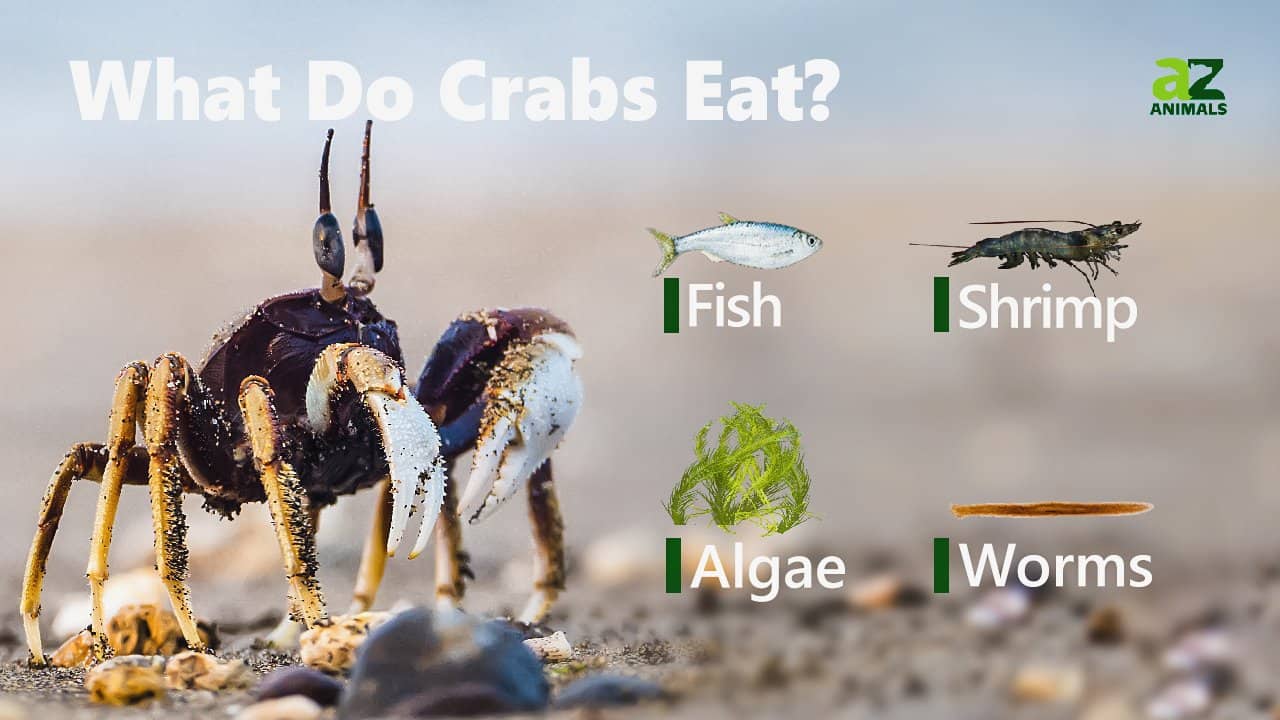Crabs are fascinating creatures that inhabit coastal areas and ocean floors around the world. With their hard protective shells and powerful pincers, they have adapted well to aquatic environments. But what exactly do these creatures eat to survive and thrive? The dietary habits of crabs are actually quite diverse and depend on a few key factors.
Types of Crabs and Their Environments Dictate Diet
There are over 4,500 species of crabs, each occupying different habitats from rocky shores to sandy beaches to deep ocean floors. Crabs are generally grouped into two types based on their habitat:
-
Shore/freshwater crabs – These include green crabs, blue crabs, fiddler crabs, and more. They live in intertidal zones, bays, and freshwater sources.
-
True/reef crabs – These include spider crabs porcelain crabs king crabs, and other species that live in the ocean depths near coral reefs or the seafloor.
The specific environment a crab species has adapted to dictates what food sources are available. Shore crabs have access to more plant matter, carrion, and small land animals, while true crabs subsist on a diet of mostly shellfish, worms, and tiny sea creatures.
Crabs Are Opportunistic Scavengers
The vast majority of crabs are omnivorous opportunistic scavengers. They will eat almost anything they can find including
- Algae
- Plankton
- Fish eggs/larvae
- Worms
- Clams, mussels, oysters, and other mollusks
- Shrimp, prawns, barnacles
- Other small crustaceans
- Decaying plant and animal matter
- Even other crabs!
Crabs use their strong pincers to pry open the shells of mollusks or break apart the carapaces of crustaceans. They do not have teeth and instead use a structure called a mandible inside their mouth to grind up food.
Hunting Strategies and Behaviors
Crabs employ a few different hunting strategies and behaviors to find and consume food
-
Foraging/scavenging – Wandering along the seafloor looking for any available food sources.
-
Ambush predation – Burrowing in sediment and waiting for prey to come within reach of their pincers.
-
Filter feeding – Collecting plankton and organic particles from the current by waving their front appendages.
-
Cannibalism – Eating smaller individuals of their own species when severely limited food is available.
Crabs locate food through senses like sight, smell, and touch. They use antennae to detect chemicals in the water from potential prey sources and identify if they are worth pursuing.
Defense Against Predators
While crabs are busy scavenging for their next meal, they also have to watch out for predators trying to make a meal out of them! Common crab predators include:
- Fish – Bass, trout, snapper, ray-finned fish
- Marine mammals – Whales, seals, sea otters
- Birds – Herons, gulls, terns
- Octopuses
- Larger crab species
Crabs rely on their hard shell, pincers, and speedy retreats into sand or mud to defend against predators. Their natural camouflage among rocky ocean floors or aquatic vegetation also helps them stay hidden from predators.
Diet Changes By Life Stage
The diet and feeding patterns of crabs change throughout their different life stages:
-
Larvae – Feed on plankton near the water surface after hatching. Important for growth and development.
-
Juveniles – Forage for plant matter and tiny crustaceans. Hide more frequently from predators.
-
Adults – Take advantage of larger food sources, including mussels, fish, and carrion. Focus energy on reproduction.
-
After Molting – Focus on highly calcified foods to harden new shell. Avoid confrontation.
Key Takeaways on Crab Diets

What do Crabs Eat?
Crabs are omnivorous creatures. Some eat a diverse diet consisting of seaweeds, worms, shrimp, algae, and many more. Larger crab species tend to have a diet consisting of crabs, mussels, small fishes, and squids.
Some species of crabs can also take down hard foods such as barnacles, sand dollars, and even starfish. Crab’s diet is highly dependent on what type of crab species they are, some species are only carnivorous, and some are omnivores.
Crabs’ Way Of Hunting?
If you want to know what crabs eat in the ocean, you must know first how to hunt as it is the only means that they can eat their food, right? Depending on the size of the crab, they primarily feed on smaller crabs, crustaceans, and other small fishes.
For example, the Dungeness crab primarily thrives on colder temperatures, and they eat just about anything they come across, from starfish, crabs, squids, and worms, to name a few.
Some other crabs also eat fish, eggs, snails, or even eat their kind if need be. Other crabs that bask on the land are scavengers who feed on dead animals, small species of birds, and plants. Scavenging crabs can eat about any dead matter settling on the ocean floor or inland.
How to Eat Crabs
FAQ
Do crabs eat meat or plants?
Most crabs are scavengers, eating whatever they can find and catch, whether it’s dead or alive. Crabs can be carnivores, who eat meat, or omnivores, who eat both meat and plants.
Can crabs eat bread?
What do crabs eat on land?
Land crabs prefer a diet of leaves, berries, flowers, grasses, and decaying plant material. Occasionally these crabs feed on insects, spiders, carrion, and feces. Land crabs typically do not stray far from their burrows to forage and often carry food in their claws back to their burrows to eat.
What can crabs not eat?
Crabs may really like salty, fatty, or sugary snacks, such as pretzels, chips, and sweetened cereal, but these should be avoided. Avoid feeding dairy products as well.
